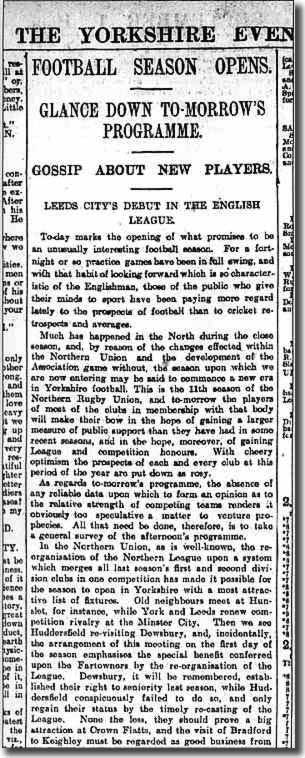 Part
1 - Results and table
Part
1 - Results and table
More than a quarter of a century of waiting finally came to an end for
the city of Leeds at the beginning of September 1905. The local Association
Football Club got its first-class history off the ground, by debuting
in the Football League with a Second Division derby away to West Yorkshire
rivals Bradford City.
The first match to have taken place in Leeds is reputed to be a game
between two representative sides from Sheffield over Christmas 1877, and
there were many false starts before Leeds City AFC eventually emerged
to become the latest Football League member club hailing from Yorkshire.
Former Chesterfield manager Gilbert
Gillies had assembled a playing squad in double quick time, supported
by trainer George Swift, with virtually all of them imports from outside
the area - only centre-half Jack Morris was a local product. Clearly,
pulling together a host of individuals was not the ideal method of building
a unit and it took a while for the players to settle down as a team.
They kicked off life in the big time wearing a kit consisting of dark
blue shirts with old-gold trim, white shorts and blue socks. It was partly
to do with their colours, but mainly because of the association with the
Old Peacock Inn, located close to the club's Elland Road ground, that
the club acquired the nickname of the Peacocks, although they were as
popularly referred to as the Citizens.
Their opening match against Bradford City, on 2 September 1905, which
Leeds lost 1-0, drew 15,000 to Valley Parade. 'Leeds City have no reason
to feel disappointed with the first performance of their men," wrote the
Yorkshire Post soccer correspondent. "Their greatest fault was to finish
in front of goal. Had they taken advantage of the chances that came their
way, a very different story would have to be told. Bromage more than once
proved himself a capable defender of goal.'
For the record, Leeds City lined up in classic 2-3-5 formation as follows:
Harry Bromage (signed from Burton United); Jock Macdonald (Blackburn Rovers),
Dick Ray (Chesterfield, captain); Charlie
Morgan (Tottenham), Harry Stringfellow (Swindon Town), James Henderson
(Bradford City); Fred Parnell (Derby County), Bob Watson (Woolwich Arsenal),
Fred Hargrave (Burton United), Dickie Morris (Liverpool), Harry Singleton
(Queens Park Rangers).
A week after the Bradford City defeat, West Bromwich Albion came to Elland
Road and won 2-0 before a crowd of 6,802, with the Yorkshire Post
summarising thus: 'Although Leeds City lost the match, they certainly
carried off the honours of the game, except in the matter of league points.
For quite three fourths of the time they monopolised the attack, and ought
to have scored, but the forwards showed a lamentable want of dash when
at close quarters.'
Two days later, on a Monday afternoon, just 3,000 turned up to watch
City gain their first League point in a 2-2 draw against Lincoln City.
Reserve centre-forward Tommy Drain scored both of City's first two goals
in the league, after coming in to replace Fred Hargrave. 'Linesman' reported
in the Leeds Mercury: 'Whilst Leeds are undoubtedly a strong team,
one weakness has characterised their work, namely, their inability to
find the net. In midfield their combination has been excellent, but when
the time arrived for the pace to be forced, and extra pressure put on
the opposition, they have failed to carry out their mission. Though an
improvement in this respect was noticeable yesterday, the inside men still
dallied with the ball too long, and but for this defect there can be little
doubt that they would have won by a considerable margin. They had innumerable
opportunities in the first half to open their account, and instead of
being on level terms at the interval they ought certainly to have possessed
a lead of three clear goals - a lead which would have removed all danger.'
The marked misfiring in front of goal was probably down to the players'
nervousness and an eagerness to please their new masters. Their play was
hurried and frenetic and that of individuals rather than a team, but soon
started to improve as they settled down.
The following Saturday, 16 September, Gillies' team won 1-0 at Leicester
Fosse with Singleton getting the decider. 'It was a somewhat lucky goal
that gave them victory, but no less than they deserved. They had throughout
the better of the argument,' claimed the Yorkshire Post report.
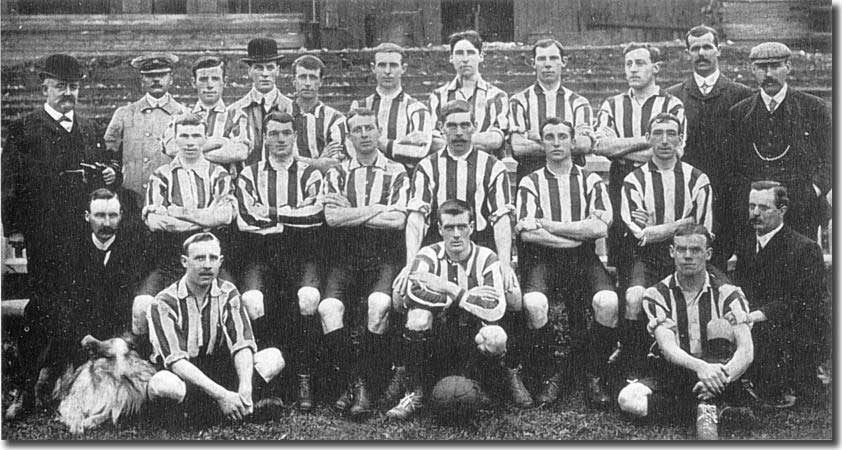 Buoyed
by this success, City managed to draw a crowd of 13,654 for their 3-1
home win against Hull City a week later. The upbeat mood was recorded
by the Yorkshire Post: 'The struggle to establish the dribbling
code on a sound and attractive footing in Leeds has been an uphill one,
but there were many smiling faces around the pioneers at the old Holbeck
rugby enclosure. The game itself was full of incident and excitement …
four goals were scored during the afternoon and all were brilliantly worked
for. Singleton got through a tremendous amount of work … Leeds were clever
and spirited throughout the game.'
Buoyed
by this success, City managed to draw a crowd of 13,654 for their 3-1
home win against Hull City a week later. The upbeat mood was recorded
by the Yorkshire Post: 'The struggle to establish the dribbling
code on a sound and attractive footing in Leeds has been an uphill one,
but there were many smiling faces around the pioneers at the old Holbeck
rugby enclosure. The game itself was full of incident and excitement …
four goals were scored during the afternoon and all were brilliantly worked
for. Singleton got through a tremendous amount of work … Leeds were clever
and spirited throughout the game.'
back to top
Dickie Morris got two of the goals and the reinstated Hargrave the other
as City turned in their most impressive performance to date, although
it was not until the closing seconds that the final goal came from Morris.
The display prompted the Leeds Mercury to offer, 'Hull, indeed,
received a rude shock. In all departments except at back they were completely
outplayed, the weakness of the forwards and half-backs being very conspicuous,
compared with the corresponding lines of the opposition. With regard to
the Leeds forwards, they were thoroughly alive, taking possession of the
ball very smartly, and the readiness with which they embraced their opportunities
was very gratifying. In contrast to some of their previous exhibitions,
one felt they had capabilities of scoring; they shot with more vigour,
and altogether played with much more devil.'
After being marooned at the bottom of the Second Division table early
on, City were now working their way steadily up the ranks, with the Hull
win boosting them to an encouraging eighth placing. The 2-2 draw with
Lincoln in the third match kicked off a fruitful run during which City
lost only once in nine games, gaining 13 points out of a possible 18.
The team had knitted together quickly and were now playing some decent
attacking football. The crowds were flocking to see these new local heroes
and an attendance of 20,000 was recorded for the goalless draw at home
to Chelsea on 25 November. The strong run, though, did not quite get City
in contention with the leading clubs. They were struggling with the fixtures
list and had played fewer games than any other team in the division.
The team had started to establish some cohesion and were getting a reputation
for making some "pretty combinations", although they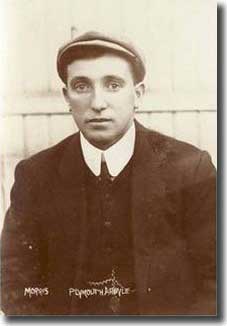 had to contend with some atrocious playing conditions. The autumn and
winter that year were all wind, rain, snow and sleet and Elland Road was
continually churned up and ankle deep in mud. The City forwards adapted
their approach play cleverly for the conditions and they had the best
of many games.
had to contend with some atrocious playing conditions. The autumn and
winter that year were all wind, rain, snow and sleet and Elland Road was
continually churned up and ankle deep in mud. The City forwards adapted
their approach play cleverly for the conditions and they had the best
of many games.
Full-backs Jock Macdonald and captain Dick Ray came in for some criticism
from the Leeds supporters, while centre-forward Fred Hargrave also suffered
some barracking, prompting Gilbert Gillies to add some attacking punch
during December when he agreed to pay Hull City £120 for their robust
22-year-old centre-forward David 'Soldier' Wilson. The crack goalscorer
was born in Tyneside, on 23 July 1883, and in 1896 he enlisted in the
Cameron Highlanders, with whom he went to Gibraltar, where his interest
in football began. He was transferred to the 1st Battalion Black Watch
and served in India and South Africa, fighting in the Boer War, whence
came his military nickname.
Wilson looked considerably older than his real age because of his heavy
moustache and would have passed for 30. He was not the fastest or most
nimble of players, but he read the game well enough to always seem to
be in the right place at the right time, and used his burly frame adroitly
in unsettling defenders.
When he returned to the United Kingdom, Wilson was bought out of the
army by Dundee Football Club, playing for them for a couple of years as
centre-forward before joining Heart of Midlothian, near his birthplace.
Wilson had scored against City when they beat the Tigers earlier in the
season at Elland Road and had given the Peacocks backs a hard time as
Hull ended Leeds' interest in the FA Cup in November. His performances
had marked him as a player to watch. Wilson quickly became a firm favourite
with the City fans after bringing a rush of goals and a marked increase
in the urgency of the entire forward line. The Leeds Mercury was
particularly enthusiastic about the newcomer, even in his absence, after
a 4-1 win over Leicester Fosse on 20 January, writing thus:
'The most pleasing feature of the home team's work was the way in which
the forwards went for goal, and the determination with which they sent
in shots. This is an improvement which I attribute largely to the influence
of Wilson. As I have previously mentioned, the old Hull City centre has
put a lot of life into the Leeds front rank, and although he was unable
to turn out against Leicester owing to an injury he sustained at Manchester,
the example he has set his new colleagues in shooting with all his strength
on every possible occasion, and more especially the efforts which were
made to follow it, were clearly apparent throughout the game.
'At last there are signs that the Leeds City forwards have discovered
the knack of scoring. The way in which they made for goal, and the incisive
shots which were fired at the net, were certainly the most pleasing features
of their decisive triumph over Leicester Fosse.'
The pick of Wilson's displays came on March 3 in an extraordinary 6-1
thrashing of Clapton Orient at Elland Road, a victory which moved City
up to sixth in the table. The visitors were adrift at the bottom of the
division, but nevertheless it was a remarkable win.
The Leeds Mercury: 'It will be taken for granted that the victors
were unmistakably the superior side. This was so in a very marked manner,
the City, after scoring their first goal at the end of seven mnutes, being
complete master of the situation. The ground was again in a wretched condition,
and this was undoubtedly a severe handicap; but no matter what the state
of the turf - or mud - had been, on the day's form it is difficult to
conceive that the home men could possibly have lost even a single point.
'Though the City are naturally a fair weather team, so to speak - the
short passing they indulge in requires a good surface to be successful
- they have, by force of circumstances, become skilful in the mud; and,
apart from other matters, they hold, one might almost say, a winning advantage
over visitors to Elland Road on this account. Thus are they extremely
fortunate.
'But it was due to no stroke of luck that success attended their efforts
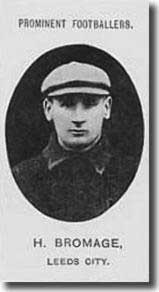 against
the Orient. Each of their six goals was the result of a carefully planned
attack. The defence, it is true, was not very powerful, but it will be
appreciated that a good deal of skill is required to find the net as many
as six times in ninety minutes, even against mediocre players; and thus
the City front rank are entitled to a good share of the credit for their
fine performance. Murray and Macdonald, with Bromage in goal, played their
part well; but they did not figure quite so conspicuously in the contest
as the forwards. They were seldom in danger of being beaten.
against
the Orient. Each of their six goals was the result of a carefully planned
attack. The defence, it is true, was not very powerful, but it will be
appreciated that a good deal of skill is required to find the net as many
as six times in ninety minutes, even against mediocre players; and thus
the City front rank are entitled to a good share of the credit for their
fine performance. Murray and Macdonald, with Bromage in goal, played their
part well; but they did not figure quite so conspicuously in the contest
as the forwards. They were seldom in danger of being beaten.
'Four out of the six goals fell to Wilson, the centre-forward, who again
showed what a dangerous man he is when within range of the net. His assumed
indifference seemed to have a disconcerting effect on the opposition;
and then, suddenly, without manoeuvring for a position, he drives the
ball clean and hard. The number of times he deceives the opposition in
this way is really remarkable. It was not only as a marksman that the
City centre was seen to advantage. He led the front rank splendidly. He
has a fine knack of drawing his opponents, and then passing out to the
wings, and in this way the opposition were frequently beaten. The other
goals were secured by Hargrave and Parnell. The former again played splendidly,
and it is difficult to see how he can be kept out of the team, notwithstanding
that R Morris, whose place he has taken, is considered good enough to
play for Wales.'
Wilson had a fifth goal disallowed and also hit the bar - he was proving
himself one of the most lethal forwards in the league. He ended the season
as City's top scorer, despite only figuring in 15 games, during which
he made the highly impressive return of 13 goals. His record would doubtless
have been even better had he not sustained an injury in a match at Grimsby
on 17 March, which ruled him out of the next eight games.
back to top
'Nimrod' of the Leeds Mercury wrote, 'Grimsby Town were determined
to avenge the defeat sustained from Leeds City last November, and in order
to do so they had recourse to methods which, to say the least, were of
a decidedly vigorous character, so much so indeed that half a dozen members
of the Leeds City eleven who appeared at Blundell Park were more or less
seriously injured. In the very first minute the Elland Road men discovered
that the fates were unkind to them, for Wilson, their crack centre-forward,
was brought down heavily by McConnell as he was making tracks for the
Grimsby goal. The Leeds man rolled on the ground in agony, and after being
attended on the touchline for a few minutes he had to be chaired off suffering
from a torn ligament in the leg. At first it was thought that the injury
was to the same limb that caused the Hull City man trouble last season,
but happily this proved not to be the case.'
The difficulties did not end there and Dickie Morris, Walker, Hargrave,
Morgan and Ray all suffered injuries as the aggressive Grimsby eleven
meted out the punishment. Somehow, City escaped with a 1-1 draw thanks
to a goal from former Glasgow Rangers full-back David Murray, who had
displaced Jock Macdonald following a £150 move from Liverpool in December.
The Grimsby ordeal left Leeds ill equipped to sustain their late 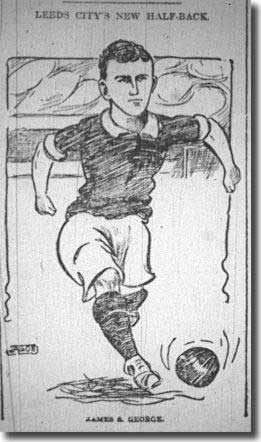 promotion
push. Nimrod wrote of the consequences, 'It was a strange sight to see
the team of cripples arrive in Leeds on Saturday night. They were met
at the Great Northern station by a sympathetic crowd of supporters, and
when the men got out of the train - R Morris and Wilson had practically
to be lifted out - they had become quite stiff owing to the long ride.
Both Wilson and Morris were placed on a luggage waggon, and were trundled
to the cab rank, where they were placed in a cab, and thence conveyed
home.'
promotion
push. Nimrod wrote of the consequences, 'It was a strange sight to see
the team of cripples arrive in Leeds on Saturday night. They were met
at the Great Northern station by a sympathetic crowd of supporters, and
when the men got out of the train - R Morris and Wilson had practically
to be lifted out - they had become quite stiff owing to the long ride.
Both Wilson and Morris were placed on a luggage waggon, and were trundled
to the cab rank, where they were placed in a cab, and thence conveyed
home.'
With so many players laid low, Gilbert Gillies was forced to ring the
changes. Centre-half John George arrived from Tottenham and former Denaby
United inside-left Jack Lavery joined him as new mainstays of the City
side. As the team travelled to meet third-placed Chelsea at the end of
March, things had reached a low with only nine fit players arriving in
London. Bob Watson had broken down in Burnley on his way to the capital,
and the City party sent a telegram to Elland Road summoning reserves.
Unfortunately, the second XI had already set off for a fixture in the
North East and only Harry Stringfellow was available to join the squad.
Desperate times call for desperate measures, and the only option was to
draft in trainer George Swift for the day. Swift was still registered
as a player and filled in on the left wing, although it was three years
since he had played any first-team football and he did little to suggest
there would be a long term revival of his playing career.
Gillies had already had to rejig his formation with Singleton playing
for the first time as a centre-forward, and early on Dick Ray sprained
his knee. He had to be withdrawn, requiring Swift to revert to the full-back
role he had been accustomed to.
City fought bravely to keep the scoreline blank for the first twenty
minutes until Ray suffered his injury in the move which led to Chelsea
breaking the deadlock. The Londoners eventually ran out easy 4-0 winners,
although matters would have been worse had they not "passed themselves
to death" and their shooting had only been a little more accurate.
The result effectively ended any faint hopes Leeds still harboured of
gaining promotion. Chelsea joined Bristol City and Manchester United in
breaking clear for a three way battle at the top of the table, with the
Peacocks then sitting thirteen points shy of promotion in sixth place.
Leeds City still had a part to play in the outcome, however, as they had
to face both Bristol and Manchester during the run in.
Leeds lost 2-0 at Bristol on April 14, formalising the West Country club's
promotion, while United's 3-1 victory at Elland Road a week later meant
that the Lancashire club went up as second placed side. The latter game
was better remembered, though, for a very early case of football hooliganism.
Hindsight is a wonderful thing and in retrospect there was every reason
to fear that there would be some controversy. Manchester United were desperate
to secure the single point that would guarantee their safe passage back
to the First Division they had last adorned in 1894. They had come very
close in each of the previous three seasons and were in no mood to miss
out again.
More ominous, however, was the choice of referee for the game. Mr T P
Campbell of Blackburn was appointed to officiate and he had been involved
in a heated game involving Manchester United just ten weeks before.
The match in question saw Bradford City hosting United. The Bantams had
come into the game buoyed by the excitement of thrashing First Division
Wolves 5-0 in the FA Cup the previous week - they were utterly convinced
they were going to despatch United with much the same ease. However, the
Lancashire club triumphed at Valley Parade by five goals to one. During
the game United’s burly Bob Bonthron repeatedly clashed with City's infamous
left winger Jimmy Conlin. The crowd - angered by their man’s treatment
- got completely out of hand. After the game the visiting team were pelted
with missiles as they made their way up Holywell Ash Lane and Bonthron
was attacked. The incident dominated the newspaper headlines and the Football
League held a commission of enquiry and duly closed Valley Parade for
a fortnight in March, with several Bradford supporters facing criminal
charges.The partisan home supporters were outraged at the result, irritated
by the tactical superiority of the opposition and convinced that the referee
had favoured the visitors.
Mr Campbell's reappearance in West Yorkshire stirred the memory and the
ire of Bradford supporters, many of whom were in attendance whilst their
first loves played away to Burslem Port Vale. The mood was anything but
convivial as the game kicked off and there were repeated shouts at the
referee to 'put a red jersey on'. The ill feeling would probably have
dissipated and come to nought, but the referee awarded Manchester United
a dubious penalty. Even though England international Charles Sagar missed
from the spot, the crowd's mood became ugly and tension grew. The game
ended 3-1 to the visitors and the home fans were in a mood for vengeance.
'Flaneur' of the Leeds Mercury takes up the story: 'The fact that
Leeds were handsomely beaten on the play had the reverse of a soothing
influence on the crowd, but it seemed at the close that hooting would
be the extent of the trouble, for the referee had only a few yards to
go to reach his dressing room, and there were a number of policemen, officials
and players around him. However, some person who was not detected put
in a well directed shot with a sharp piece of cement, and struck the referee
on the nose, inflicting a slight wound.
back to top
'One or two more missiles were thrown without damage, and for a time
a crowd of lads and young men hung about outside the ground. The police
were nearly as strong numerically as the knot of hangers on, and the latter
were cleared away from the vicinity of the club premises. So the incident
ended. More will be heard of it, no doubt, when the referee makes his
report. It is unfortunate that the Leeds Club should have to suffer for
the misdeeds of a few larrikins, for if a large section of the crowd amused
itself by hooting, the dangerous hostility to the referee was the work
of only two or three.'
The Yorkshire Post deplored such 'cowardly reprisals', saying,
'All the season, the spectators have been remarkably well behaved … but
on Saturday, owing to the blackguardly conduct of some half a dozen, this
good character was sadly besmirched. The suspension of the Bradford ground
… has apparently not acted as deterrent to the few hooligans who infest
all football grounds.'
No action was taken against City, thankfully, and the disappointment
of the defeat was eased somewhat the following week. David Wilson's return
to the attack helped Leeds pull off a decent 2-1 win at Glossop to cement
an extremely encouraging sixth place finish to the club's debut season.
Earlier in the season, City had managed an impressive 3-0 win away to
Manchester United and had trounced lowly Morley 11-0 in the FA Cup with
Fred Hargrave and Dickie Morris bagging four goals apiece. The fledgling
club had proven themselves worthy members of the Second Division and inspired
some wonderful memories for the Yorkshire public. 'An old Rugby enthusiast'
wrote in the Yorkshire Post, 'I consider that the team the city
authorities have got together are a credit both to the town they represent
and to the club. Their play in home matches has been in advance of any
visiting combination up to date; they have a fine goalkeeper, full-backs
(whose only fault is playing too close up to their forwards instead of
falling back upon their goal), and half-backs, and a forward line second
to none in the Second League, and the equal of a few First League clubs.'
| |
Top of Division Two - final
placings |
| |
Pos
|
|
P
|
W
|
D
|
L
|
F
|
A
|
Pts
|
| |
1st
|
Bristol
City |
38
|
30
|
6
|
2
|
83
|
28
|
66
|
| |
2nd
|
Manchester
United |
38
|
28
|
6
|
4
|
90
|
28
|
62
|
| |
3rd
|
Chelsea |
38
|
22
|
9
|
7
|
90
|
37
|
53
|
| |
4th
|
WBA
|
38
|
22
|
8
|
8
|
79
|
36
|
52
|
| |
5th
|
Hull
City |
38
|
19
|
6
|
13
|
67
|
54
|
44
|
| |
6th
|
Leeds
City |
38
|
17
|
9
|
12
|
59
|
47
|
43
|
| |
7th
|
Leicester
Fosse |
38
|
15
|
12
|
11
|
53
|
48
|
42
|
| |
8th
|
Grimsby
Town |
38
|
15
|
10
|
13
|
46
|
46
|
40
|
| |
9th
|
Burnley |
38
|
15
|
8
|
15
|
42
|
53
|
38
|
| |
|
|
|
|
|
|
|
|
|
David Wilson's status as the club's leading light was without question,
but the Elland Road faithful could cheer other heroes: Harry Bromage had
proven himself a fine goalkeeper, while the combination of Fred Parnell
and Bob Watson on the right flank offered constant threat up front. John
Lavery arrived late on as a skilful if lightweight inside-left and John
George brought some steadiness at centre-half after his arrival from Tottenham.
He unfortunately dislocated his elbow in the ill-tempered game with Manchester
United in April and missed the closing day out at Glossop, but altogether
the team had developed as a confident and classy outfit, boding well for
the future.
The rise to prominence of Leeds City had a significant effect on attendances
at Headingley where Leeds Rugby League Club's average gate nosedived from
9,022 to 5,632. At last rugby's invincible monopoly of the local sporting
affections had been broken - City's average home attendance that year
was in excess of 9,000 - and they pulled in 22,000 for the visit of Bradford
City on December 30 and 20,000 against Chelsea in November. The size of
the attendances at Elland Road were sufficient to help the club to generate
a profit of £122 in its first year in the Football League - good
news, indeed!
The folk of Leeds had taken their first taste of big time 'Socker' and
decided they really rather enjoyed it. Their boys had done them proud
and hinted at significantly better things to come.
As the curtain came down on their debut season, things looked rosy indeed
for the future of Leeds City AFC.
Other Football Highlights from 1905/06
- Liverpool won the League Championship for the second time after winning
promotion in 1904/05. It was the first time that any team had won the
title in the season following promotion. They finished four points clear
of second placed Preston North End
- Everton beat Newcastle 1-0 in the FA Cup Final with a goal from Sandy
Young to make it a Merseyside double
- England joined FIFA, which was formed on May 21 1904
- The English record transfer fee was still the £1,000 which Middlesbrough
had paid to Sunderland for England international inside forward Alf
Common in February 1905
- The England team beat Northern Ireland 5-0 and Wales 1-0, but lost
2-1 at Hampden to Scotland and the Home International Championships
finished in a tie between England and Scotland. The England-Scotland
match was the first time the attendance for an international had exceeded
100,000
Part 1 - Results and table
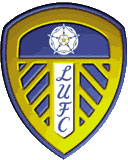











 Buoyed
by this success, City managed to draw a crowd of 13,654 for their 3-1
home win against Hull City a week later. The upbeat mood was recorded
by the Yorkshire Post: 'The struggle to establish the dribbling
code on a sound and attractive footing in Leeds has been an uphill one,
but there were many smiling faces around the pioneers at the old Holbeck
rugby enclosure. The game itself was full of incident and excitement …
four goals were scored during the afternoon and all were brilliantly worked
for. Singleton got through a tremendous amount of work … Leeds were clever
and spirited throughout the game.'
Buoyed
by this success, City managed to draw a crowd of 13,654 for their 3-1
home win against Hull City a week later. The upbeat mood was recorded
by the Yorkshire Post: 'The struggle to establish the dribbling
code on a sound and attractive footing in Leeds has been an uphill one,
but there were many smiling faces around the pioneers at the old Holbeck
rugby enclosure. The game itself was full of incident and excitement …
four goals were scored during the afternoon and all were brilliantly worked
for. Singleton got through a tremendous amount of work … Leeds were clever
and spirited throughout the game.' had to contend with some atrocious playing conditions. The autumn and
winter that year were all wind, rain, snow and sleet and Elland Road was
continually churned up and ankle deep in mud. The City forwards adapted
their approach play cleverly for the conditions and they had the best
of many games.
had to contend with some atrocious playing conditions. The autumn and
winter that year were all wind, rain, snow and sleet and Elland Road was
continually churned up and ankle deep in mud. The City forwards adapted
their approach play cleverly for the conditions and they had the best
of many games. against
the Orient. Each of their six goals was the result of a carefully planned
attack. The defence, it is true, was not very powerful, but it will be
appreciated that a good deal of skill is required to find the net as many
as six times in ninety minutes, even against mediocre players; and thus
the City front rank are entitled to a good share of the credit for their
fine performance. Murray and Macdonald, with Bromage in goal, played their
part well; but they did not figure quite so conspicuously in the contest
as the forwards. They were seldom in danger of being beaten.
against
the Orient. Each of their six goals was the result of a carefully planned
attack. The defence, it is true, was not very powerful, but it will be
appreciated that a good deal of skill is required to find the net as many
as six times in ninety minutes, even against mediocre players; and thus
the City front rank are entitled to a good share of the credit for their
fine performance. Murray and Macdonald, with Bromage in goal, played their
part well; but they did not figure quite so conspicuously in the contest
as the forwards. They were seldom in danger of being beaten. promotion
push. Nimrod wrote of the consequences, 'It was a strange sight to see
the team of cripples arrive in Leeds on Saturday night. They were met
at the Great Northern station by a sympathetic crowd of supporters, and
when the men got out of the train - R Morris and Wilson had practically
to be lifted out - they had become quite stiff owing to the long ride.
Both Wilson and Morris were placed on a luggage waggon, and were trundled
to the cab rank, where they were placed in a cab, and thence conveyed
home.'
promotion
push. Nimrod wrote of the consequences, 'It was a strange sight to see
the team of cripples arrive in Leeds on Saturday night. They were met
at the Great Northern station by a sympathetic crowd of supporters, and
when the men got out of the train - R Morris and Wilson had practically
to be lifted out - they had become quite stiff owing to the long ride.
Both Wilson and Morris were placed on a luggage waggon, and were trundled
to the cab rank, where they were placed in a cab, and thence conveyed
home.'